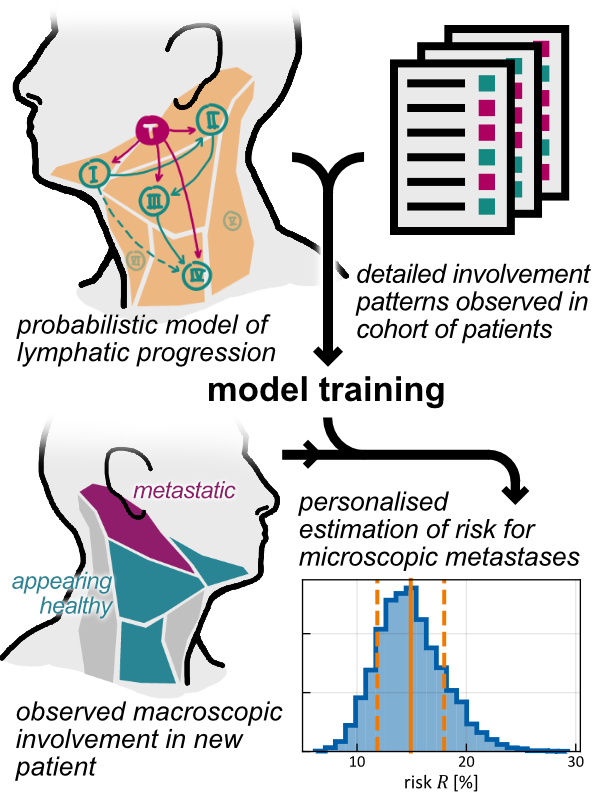A patient’s state of disease is modelled via one hidden binary random
variable for each LNL, which indicates if the LNL harbors tumor including
occult metastases. This hidden state of a LNL is connected via sensitivity and
specificity to an observed binary random variable that indicates if metastases
are seen on imaging. Over one-time step, tumor cells may spread from the primary
tumor to an LNL, or between LNLs, with some probability rate. Formally, this is
described by a hidden Markov model (HMM). The directed arcs of the HMM's graph reflect
the direction of lymph flow and spread probability rates are learned from a
dataset of patients in whom involvement of each LNL was reported (Figure 1). T-stage
can be incorporated into the model by assuming that on average late T-stage
tumors had more time to progress than early T-stage tumors. We demonstrate the
HMM model for ipsilateral spread of oropharyngeal head & neck squamous cell
carcinoma, trained via MCMC sampling using a dataset reconstructed from [1],
and under the assumption that the portion of N0 patients is 30% for early
T-stage patients and 20% for late T-stage
Figure 1:

[1] Sanguineti (2009) Int. J. Rad. Onc. Biol. Phys. 74(5) 1356–1364